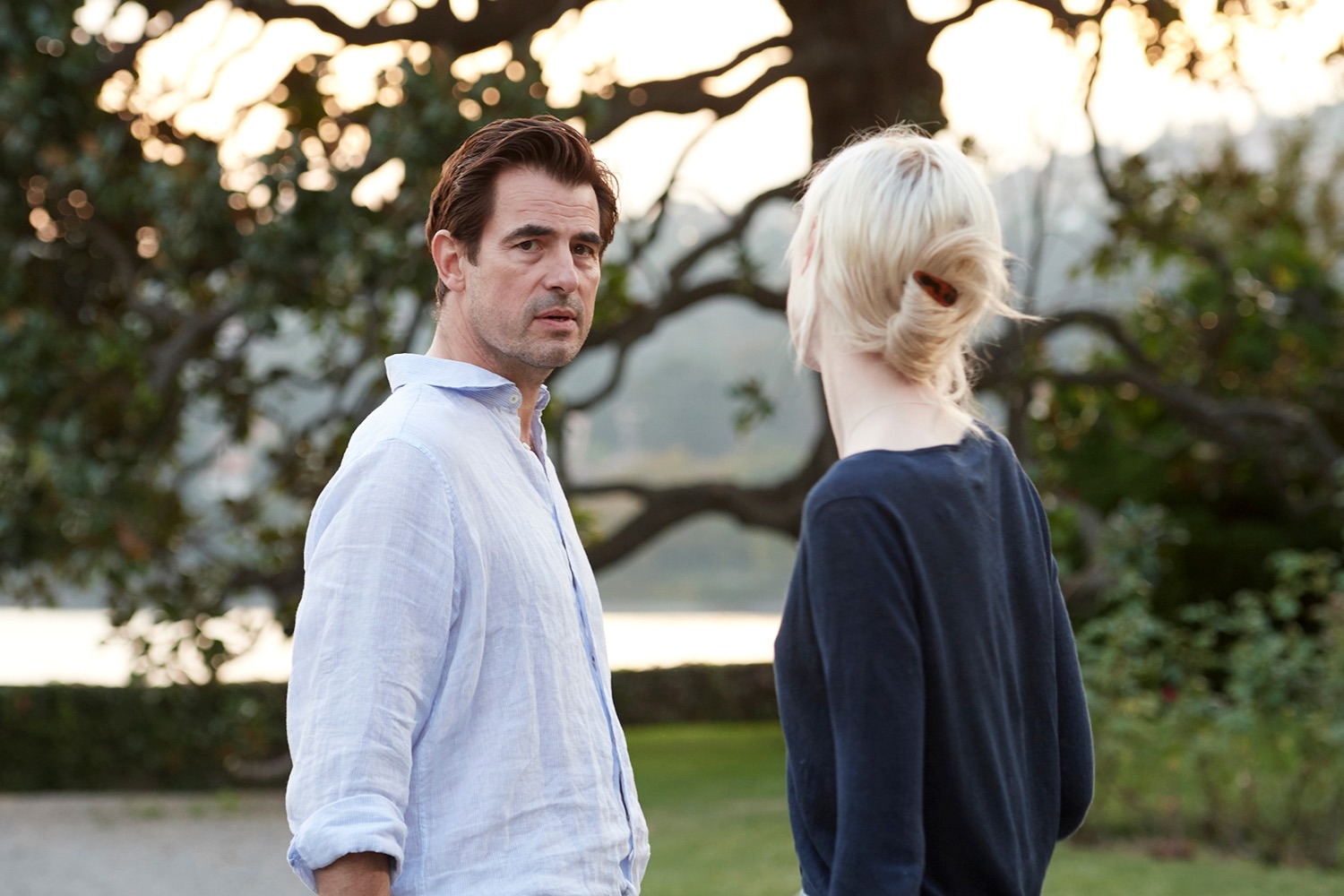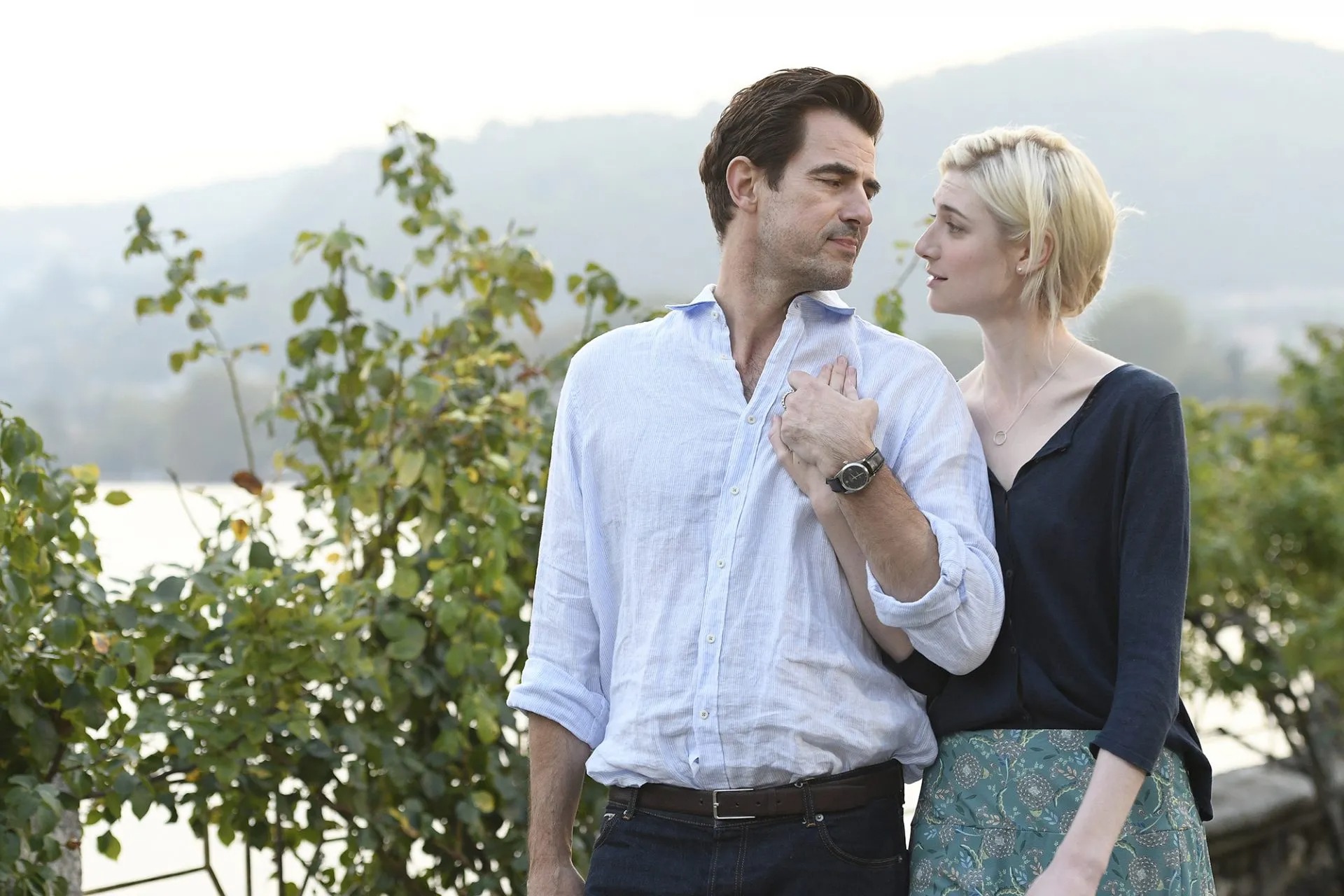The neo-noir crime thriller “The Burnt Orange Heresy,” directed by Giuseppe Capotondi, intertwines elements of seduction and suspense. Scott Smith adapted the screenplay from Charles Willeford’s novel, creating a narrative that is further enriched by the performances of Elizabeth Debicki and Claes Bang.
The film sparks engaging discussions about the essence of art, making it an intriguing watch. The script, however, tends to digress into philosophical musings too frequently, leading to a dilution of the thriller’s tension. If you’re drawn in by its premise and wish to explore the intricacies of the story further, continue reading!

Movie Summary & Plot Synopsis
James Figueras, played by Claes Bang, prepares to address a gathering of elderly art enthusiasts. In his role as an art critic, he manipulates the audience’s perception of a painting through a series of deliberate misrepresentations.
Initially, he disparages the artwork’s technique, framing it with reckless brushstrokes, and later spins a tale about the painter’s struggles that transforms the piece into a masterpiece in their eyes. After this elaborate ruse, he reveals the truth: he himself is the creator of the painting, a fact he shared to illustrate the critic’s role in shaping art’s value.
Among the audience is a young woman named Berenice Hollis, portrayed by Elizabeth Debicki, who is intrigued by his story and requests a copy of the painting. James declines, referring to it as an “oratorial gesture,” but becomes enamored with her. This marks the start of their relationship.
These two characters introduce a dynamic where James embodies the self-absorbed critic who relishes his art expertise and his ability to influence others, while Berenice remains an intriguing mystery.
After spending the night together, James invites her to meet Joseph Cassidy, an influential art collector played by Mick Jagger, at his opulent Lake Como estate. There, James professes his love for art while trying to impress Berenice by analyzing Joseph’s possessions.
Joseph soon arrives, challenging James’ assertions and inviting the couple to dinner. He shows interest in Berenice, prompting James to scrutinize her truthfulness. Joseph eventually reveals his motivation for the dinner, discussing the reclusive artist Jerome Debney, likening him to J.D. Salinger due to the mysterious aura surrounding him. Debney is notorious for having his paintings destroyed during exhibitions.
Though celebrated by the art community, Debney communicates little about his work, contributing to the enigma surrounding him. Joseph presents James with a unique opportunity: to interview Debney in exchange for a favor—he wants James to steal a painting for his collection. He corners James into compliance by threatening to expose his validation of a forgery, which would ruin his career. Reluctantly, James agrees to the arrangement.

As James and Berenice’s relationship develops, they explore each other’s lives, their exchanges revealing the deceptive nature of their motives—paralleling the discussions about art interpretation.
The following day, they encounter Debney, who critiques James’ artistic skills while also acknowledging them at times. He then isolates Berenice to caution her about James’ ulterior motives.
Berenice finds herself gravitating towards Debney, who offers her a sense of trust absent in her relationship with James. While James exercises frustration at Debney’s reluctance to collaborate, Berenice becomes increasingly drawn to the artist.
During a meeting, James urges Debney to display his work, a request that initially angers the artist but eventually leads to an unexpected rapport as Debney appreciates James’ fervor.
The artist introduces the couple to his cabin, showcasing blank canvases that provoke James’ irritation. Debney speaks of burning his paintings, inciting James’ outrage at the loss of artistic expression for the fans.
James grapples with his moral dilemma regarding Joseph’s request and, after Debney leaves, he devises a plan. He stealthily takes one of Debney’s canvases labeled “The Burnt Orange Heresy” and, along with a letter, sets the studio ablaze, escaping with nothing but the single canvas alongside Berenice.
As they drive back, James contemplates how to articulate the newly acquired artwork. After Berenice rests, he seizes the opportunity to paint on the canvas himself, channeling his inspiration into the piece. A call from Joseph reveals that he possesses the only Debney painting in existence.
Despite facing a blank canvas, James vividly describes the artwork, infusing it with bright, warm colors while signing it in Debney’s name, using the signature from the letter he pilfered. Berenice discovers his secret and confronts him about the painting.
In a fit of rage, James reveals his sociopathic tendencies, finally drowning her in the bathtub. Soon after, he realizes he merely imagined her demise, yet he compels her to return to his apartment, leveraging his manipulative skills.
When Berenice questions whether Joseph pressured him into stealing Debney’s work, he insists he only received an opportunity to write about it. Despite her offers to help him appreciate true beauty, James remains entrenched in his narcissism, dismissing her guidance.
Berenice’s inquiries into his competence provoke a violent reaction from James, who strikes her. Afterward, he disposes of her body in a lake, seeking refuge on the shore. A passing ship prompts him to flee, fearing the consequences of his actions and the murder he has committed.



